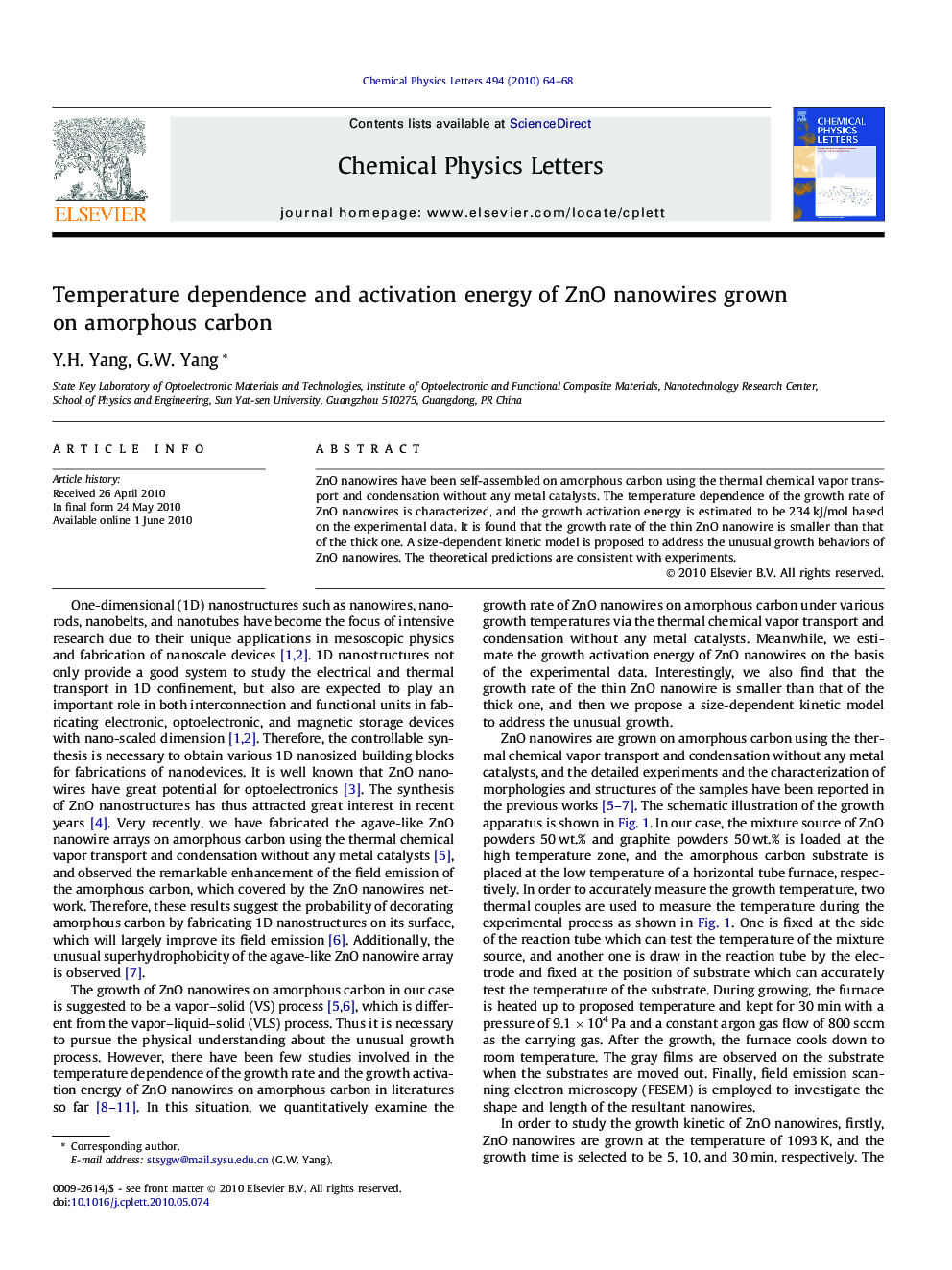| Article ID | Journal | Published Year | Pages | File Type |
|---|---|---|---|---|
| 5386163 | Chemical Physics Letters | 2010 | 5 Pages |
ZnO nanowires have been self-assembled on amorphous carbon using the thermal chemical vapor transport and condensation without any metal catalysts. The temperature dependence of the growth rate of ZnO nanowires is characterized, and the growth activation energy is estimated to be 234Â kJ/mol based on the experimental data. It is found that the growth rate of the thin ZnO nanowire is smaller than that of the thick one. A size-dependent kinetic model is proposed to address the unusual growth behaviors of ZnO nanowires. The theoretical predictions are consistent with experiments.
Graphical abstractLength of ZnO nanowires as a function of the growth time at the temperatures.Download high-res image (60KB)Download full-size imageResearch highlights⺠We think that the research paper submitted to Chem. Phys. Lett. is an important scientific advance to have a clear and general insight into the basic physical processes involved in the control growth of nanowires. ⺠In this study, we have quantitatively examined the growth rate of ZnO nanowires under various temperatures via thermal chemical vapor transport and condensation without any metal catalysts, and estimated the growth activation energy of ZnO nanowires on the basis of the experimental data of the growth rate of ZnO nanowires. ⺠Interestingly, we fund that the growth rate of the thin ZnO nanowire is smaller than that of the thick one. ⺠For this issue, a size-dependent kinetic model was proposed to pursue the unusual growth of ZnO nanowires. ⺠Importantly, the theoretical predictions are consistent with experiments, suggesting that the nanosized effect could be expected to control the growth of nanowires.
